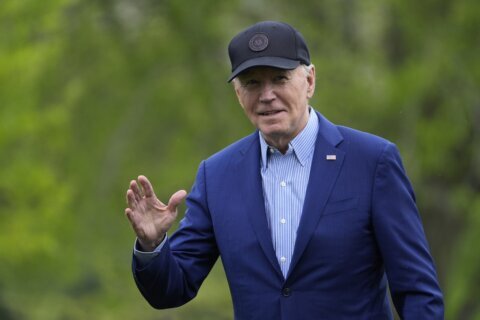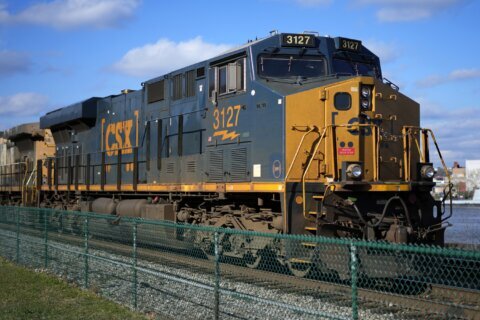WASHINGTON (AP) — President Joe Biden met with a bipartisan group of governors and mayors at the White House on Friday as part of his push to give financial relief from the coronavirus pandemic to state and local governments — a clear source of division with Republican lawmakers who view the spending as wasteful.
As part of a $1.9 trillion coronavirus package, Biden wants to send $350 billion to state and local governments and tribal governments. While Republicans in Congress have largely objected to this initiative, Biden’s push has some GOP support among governors and mayors.
“You folks are all on the front lines and dealing with the crisis since day one,” Biden said at the start of the Oval Office meeting. “They’ve been working on their own in many cases.”
Republican lawmakers have stressed that some past aid to state and local governments remains unspent and revenues have rebounded after slumping when the coronavirus first hit. But state governments have shed 332,000 jobs since the outbreak began to spread last February, and local governments have cut nearly 1 million jobs, according to the Bureau of Labor Statistics.
Republican Govs. Asa Hutchinson of Arkansas and Larry Hogan of Maryland attended the Friday meeting, along with Democratic governors, including New York’s Andrew Cuomo and New Mexico’s Michelle Lujan Grisham. The mayors of Atlanta, Detroit, Miami and Arlington, Texas, also were at the meeting. New Orleans Mayor LaToya Cantrell was set to attend, but she could not because a White House test showed she was positive for the coronavirus, according to her press secretary. A second test taken later came back negative.
Miami Mayor Francis Suarez, a Republican, called the discussion spirited and said the past aid to local governments was insufficient, so more money was needed.
“Our residents got a fraction of the help that they needed,” Suarez said at the White House briefing, adding that the city is ”going to put the money to good use.”
Under the relief package being crafted in House committees this week, every state and the District of Columbia would get at least $500 million, but most of the money going to states would be distributed based on their share of unemployed workers nationally.
Hutchinson said he objected to the plan’s $1.9 trillion price tag and the strategy of using jobs figures to guide the flow of money to state and local governments.
“That’s really a disincentive for economic growth and people working,” Hutchinson told The Associated Press. “I said the only fair way to do it is to distribute money to the states on a per capita basis. That’s fair, it’s undisputable and I think, by and large, most governors understand that and want that.”
Local governments would get $130.2 billion, and tribal governments would get $20 billion.
The money could be used to cover costs incurred because of the pandemic and lost revenue and to address the negative economic impact of the disease.
Congress provided $150 billion in direct assistance to state and local governments in an earlier relief package signed into law last March.
Members of the House Committee on Oversight and Reform debated the merits of the spending for state and local governments on Friday.
Rep. Carolyn Maloney, the committee’s Democratic chair, said states and communities are desperate for help at a time when the pandemic continues to take lives and livelihoods.
“This money will allow these governments to distribute vaccines faster, expand testing more broadly and maintain vital services across our country,” Maloney said. “It will also help Main Street economies and save the jobs of our teachers, first responders and other essential workers.”
Republican lawmakers described the proposed $350 billion in spending as a boondoggle that in the long run could cause inflation and an economic crash.
Rep. James Comer, the ranking Republican, said states still have money to spend from the relief package Congress passed last March. He played a video clip of California Gov. Gavin Newsom recently talking about how higher-than-expected revenues would allow the state to boost its cash reserves.
“Despite this surplus, California is still receiving an additional $41.2 billion in taxpayer dollars from this $350 billion slush fund,” Comer said. He went on to describe the spending as a “big blue state bailout.”
___
Boak reported from Baltimore. Associated Press writers Andrew DeMillo in Little Rock, Ark., and Chevel Johnson in New Orleans contributed to this report.
Copyright © 2024 The Associated Press. All rights reserved. This material may not be published, broadcast, written or redistributed.







